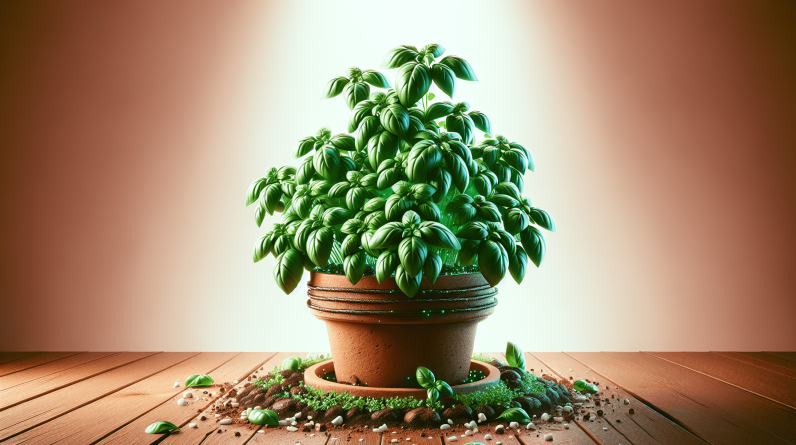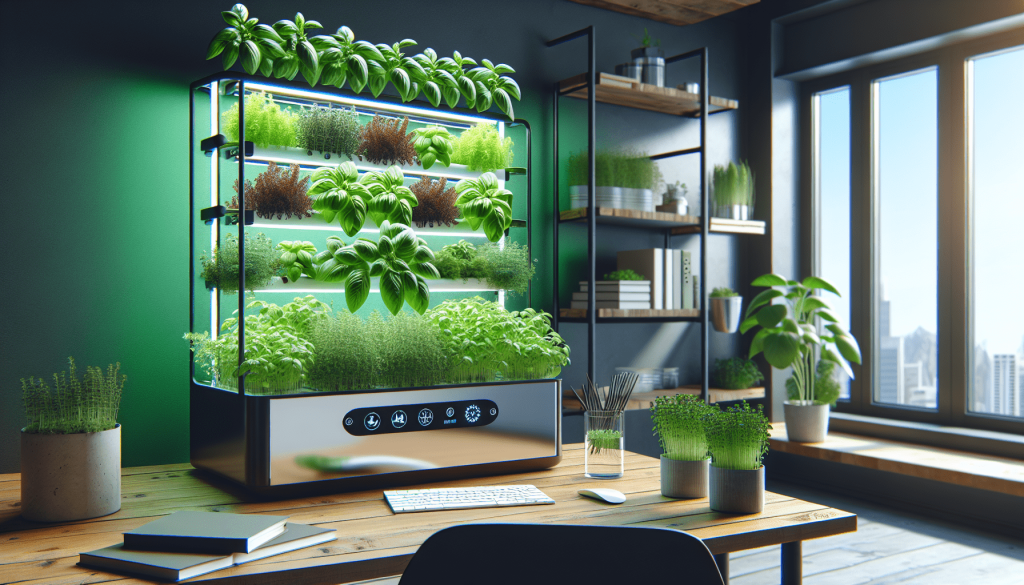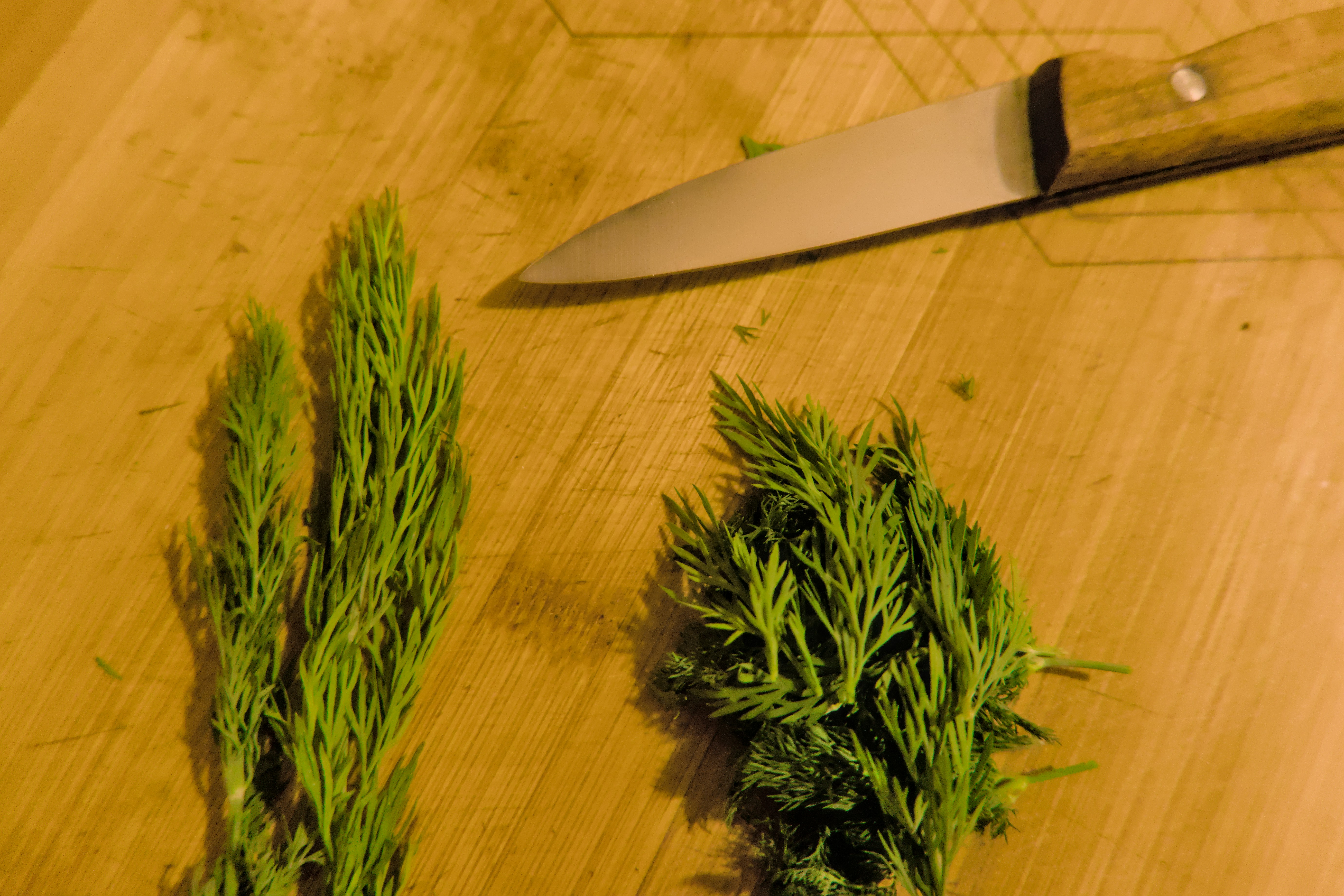
Have you ever wondered how you can grow herbs indoors using hydroponics? This innovative gardening method offers a range of benefits over traditional soil-based cultivation, and it enables you to grow a variety of herbs right in your own home. By harnessing the power of nutrient-rich solutions and water conservation techniques, hydroponics allows you to enjoy fresh herbs all year round, regardless of the outdoor weather conditions. Let’s explore the step-by-step guide to successfully growing hydroponic herbs indoors.
Choosing the Right Herbs for Hydroponic Growing
When selecting herbs for your hydroponic garden, it’s essential to choose varieties that thrive in a soilless environment. Herbs such as basil, mint, cilantro, parsley, and chives are excellent choices for hydroponic cultivation due to their adaptability and rapid growth. These herbs require minimal maintenance and can easily flourish in a hydroponic system, providing you with a fresh and abundant supply of flavorful ingredients for your culinary endeavors.
The Best Herbs for Hydroponic Growing
When it comes to hydroponic herb gardening, certain herbs are more suited for this growing method than others. Basil, with its fragrant leaves and fast growth rate, is a popular choice for hydroponic systems. Mint, known for its refreshing flavor and vigorous growth, thrives in a controlled hydroponic environment. Cilantro, with its distinctive taste and culinary versatility, is another herb that adapts well to hydroponic cultivation. Parsley and chives are also ideal herbs for hydroponic growing, providing a consistent yield of fresh herbs for your kitchen.
Setting Up Your Hydroponic System
To grow herbs indoors using hydroponics, you’ll need to set up a hydroponic system that delivers nutrients and water directly to the plant roots. There are various types of hydroponic systems available, such as the Deep Water Culture (DWC), Nutrient Film Technique (NFT), and Drip Irrigation systems. Each system has its own advantages and requirements, so it’s essential to choose one that suits your space, budget, and gardening goals.
Types of Hydroponic Systems
Deep Water Culture (DWC) systems involve suspending plant roots in a nutrient-rich solution, allowing them to absorb essential nutrients directly. Nutrient Film Technique (NFT) systems use a thin film of nutrient solution to deliver nutrients to plant roots while maintaining proper aeration. Drip Irrigation systems deliver a controlled amount of nutrient solution to plant roots through drip emitters, ensuring consistent hydration and nutrient uptake. Consider the space available, the number of herbs you plan to grow, and your level of gardening experience when selecting a hydroponic system for indoor herb cultivation.
Choosing the Right Growing Medium
In hydroponic herb gardening, the growing medium plays a crucial role in providing support for plant roots and facilitating nutrient absorption. Unlike traditional soil gardening, hydroponics relies on inert substrates that do not contain nutrients but offer physical support and moisture retention. Common hydroponic growing mediums include Rockwool, clay pellets, coconut coir, perlite, and vermiculite, each with its unique characteristics and benefits.
Selecting an Ideal Growing Medium
Rockwool is a popular choice for hydroponic herb cultivation due to its excellent water retention and aeration properties. Clay pellets are lightweight and provide ample drainage for plant roots, promoting healthy growth. Coconut coir, derived from coconut husks, is a sustainable growing medium that retains moisture and encourages root development. Perlite and vermiculite are mineral-based substrates that improve aeration and drainage, ensuring optimal conditions for herb growth. Consider the water retention, aeration, and pH stability of each growing medium when selecting the ideal substrate for your hydroponic herbs.
Providing Nutrient Solutions for Healthy Growth
Nutrient solutions are the lifeblood of hydroponic herb gardening, providing essential minerals and nutrients directly to plant roots for healthy growth and development. These solutions are carefully formulated to meet the nutritional needs of herbs in a soilless environment, ensuring they receive the right balance of macro and micronutrients for optimal productivity. By monitoring and adjusting nutrient solution levels regularly, you can ensure that your hydroponic herbs receive all the nutrients they need to thrive.
Essential Nutrients for Hydroponic Herbs
Nitrogen, phosphorus, and potassium are essential macronutrients that herbs require for growth, photosynthesis, and nutrient uptake. Calcium, magnesium, and sulfur are secondary macronutrients that play a vital role in plant metabolism and cell structure. Additionally, micronutrients such as iron, manganese, zinc, copper, and boron are essential for enzyme function and overall plant health. By providing a well-balanced nutrient solution that includes all these essential elements, you can support healthy growth and robust herb production in your hydroponic system.

Managing Light and Temperature Levels
Light and temperature are critical factors that influence the growth and productivity of hydroponic herbs indoors. Herbs require adequate light exposure to undergo photosynthesis and produce energy for growth, making it essential to provide them with sufficient artificial lighting in the absence of natural sunlight. Temperature also plays a crucial role in herb growth, affecting metabolic processes, nutrient uptake, and overall plant health. By optimizing light and temperature levels in your hydroponic system, you can create an ideal environment for herbs to thrive.
Providing Adequate Light Exposure
Herbs typically require 12-16 hours of light exposure each day to support photosynthesis and promote healthy growth. LED grow lights are an effective artificial lighting solution for hydroponic herb cultivation, providing the necessary spectrum of light for all growth stages. Position grow lights at an appropriate distance from plant canopies to prevent light burn and ensure uniform light distribution. Monitor light intensity and duration regularly to adjust the lighting schedule based on herb growth and light requirements.
Maintaining Optimal Temperature Levels
Herbs thrive in temperatures ranging from 60-75°F (15-24°C), with slight variations depending on the specific herb species. Provide adequate ventilation in your indoor hydroponic setup to prevent heat buildup and maintain proper air circulation around plants. Use fans or air circulation systems to regulate temperature levels and prevent humidity-related issues such as mold and mildew. Monitor temperature fluctuations and adjust environmental controls as needed to create a stable and comfortable growing environment for your hydroponically grown herbs.
Ensuring Proper Water and pH Management
Water quality and pH levels are crucial aspects of hydroponic herb gardening, as they directly impact nutrient uptake and plant health. Herbs grown in hydroponic systems rely on a nutrient-rich water solution for hydration and mineral absorption, making it essential to maintain water quality and pH within optimal ranges. By regularly monitoring water quality, nutrient levels, and pH levels, you can prevent nutrient deficiencies, mineral imbalances, and other issues that may affect herb growth and productivity.
Monitoring Water Quality
Ensure that the water source for your hydroponic system is clean, contaminant-free, and free of chlorine or other harmful chemicals. Use filtered or distilled water to minimize impurities and maintain water quality for herb cultivation. Regularly test water parameters such as pH, electrical conductivity (EC), and total dissolved solids (TDS) to ensure they are within the recommended range for hydroponic herb growth. Adjust water quality and nutrient solutions as needed to maintain optimal conditions for healthy herb development.
Regulating pH Levels
Maintain pH levels between 5.5 and 6.5 in your hydroponic system to ensure proper nutrient uptake and plant growth. Use a pH meter or pH testing kit to monitor and adjust pH levels regularly, as fluctuations can affect nutrient availability and herb vitality. Adjust pH levels by adding pH up (potassium hydroxide) or pH down (phosphoric acid) solutions to the nutrient reservoir as needed to maintain a stable pH range. Monitor pH levels daily and adjust nutrient solutions to prevent nutrient lockout and maintain optimal growing conditions for your hydroponic herbs.

Preventing Pests and Diseases in Hydroponic Systems
One of the advantages of hydroponic herb gardening is the reduced risk of soil-borne pests and diseases that commonly affect traditional soil-grown plants. However, hydroponic systems are not entirely immune to pest infestations and microbial issues, so it’s essential to implement preventive measures to protect your herbs from potential threats. By practicing good hygiene, monitoring plant health, and implementing pest control strategies, you can ensure that your hydroponically grown herbs remain healthy and productive.
Implementing Hygiene Practices
Maintain a clean and sanitized hydroponic system by regularly cleaning and sterilizing equipment, growing containers, and nutrient reservoirs. Remove dead or decaying plant matter promptly to prevent the buildup of pathogens and pests in your hydroponic setup. Use sterile tools and equipment when handling herbs to avoid introducing contaminants into the growing environment. Implement a regular maintenance schedule to clean, disinfect, and inspect your hydroponic system to prevent pest infestations and disease outbreaks.
Monitoring Plant Health
Regularly inspect your hydroponic herbs for signs of pest infestations, nutrient deficiencies, or disease symptoms, such as yellowing leaves, wilting, or discoloration. Monitor plant growth, root development, and overall herb health to identify any potential issues early and take corrective action promptly. Maintain optimal growing conditions, including proper light exposure, nutrient levels, and pH balance, to support plant health and prevent stress-related problems. By monitoring plant health regularly, you can address any issues before they escalate and ensure the continued growth and productivity of your hydroponically grown herbs.
Implementing Pest Control Strategies
Implement pest control measures such as biological controls, sticky traps, beneficial insects, and organic pesticides to manage pest infestations in your hydroponic system. Use predatory mites, ladybugs, or lacewings to control common hydroponic pests like aphids, spider mites, and whiteflies without harmful chemicals. Place sticky traps near plants to capture flying pests and monitor pest populations in your hydroponic garden. Use organic pesticides such as neem oil or insecticidal soap as a last resort to manage severe pest outbreaks while minimizing chemical exposure to your hydroponic herbs.
Harvesting and Enjoying Your Hydroponic Herbs
Once your hydroponic herbs have reached maturity and produced abundant foliage, it’s time to harvest and enjoy the fresh flavors of your indoor garden. Harvest herbs regularly by trimming excess growth and using fresh leaves in culinary dishes, teas, garnishes, and home remedies. Prune herbs to encourage bushier growth and prevent leggy or overgrown plants in your hydroponic system. Store harvested herbs properly in airtight containers or freeze them for long-term storage and use in future recipes.
Harvesting Herbs for Fresh Use
Harvest herbs early in the day when essential oils are most concentrated, ensuring the best flavor and aroma in freshly picked leaves. Trim herb stems at a 45-degree angle using clean, sharp scissors to promote healthy growth and minimize damage to plants. Use harvested herbs immediately in cooking, salads, beverages, and herbal infusions to enjoy their full flavor and nutritional benefits. Experiment with different herb combinations and recipes to explore the diverse culinary possibilities of your hydroponically grown herbs.
Storing Herbs for Long-Term Use
Store excess herbs in airtight containers, plastic bags, or freezer-safe packaging to preserve freshness and flavor for future use. Keep herbs refrigerated to extend shelf life and maintain optimal quality for up to several weeks. Freeze herbs in ice cube trays with water or oil to create convenient portions for cooking and seasoning dishes. Label and date herb storage containers to track freshness and rotation, ensuring you use herbs before they lose their potency and flavor. Incorporate stored herbs into your favorite recipes and culinary creations to elevate the taste and aroma of your dishes with homegrown flavor.
In conclusion, growing herbs indoors with hydroponics is a rewarding and sustainable way to cultivate fresh, flavorful herbs all year round. By selecting the right herbs, setting up a suitable hydroponic system, providing adequate light and temperature levels, managing water quality and pH, and preventing pests and diseases, you can successfully grow a thriving herb garden indoors. Harvest your hydroponically grown herbs regularly, store them properly, and enjoy the culinary delights of your homegrown harvests. With the right knowledge, tools, and care, you can create a flourishing hydroponic herb garden that enriches your meals, wellness, and connection to nature. Happy growing!











